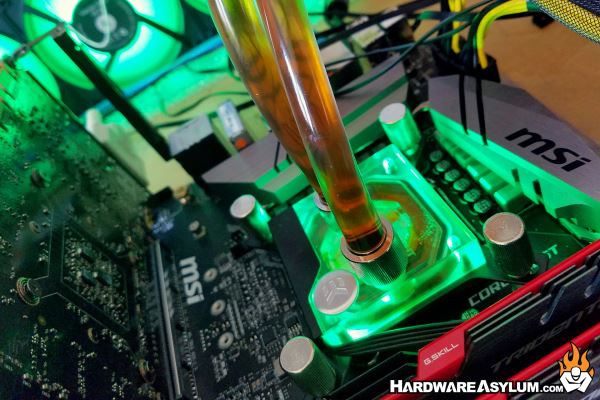EK Waterblocks Classic RGB P360 Watercooling Kit Review
Author: Dennis GarciaIntroduction
One of the biggest names in PC Watercooling is EK. They rose through the ranks during the watercooling land rush when the hobby started to gain traction and hardware enthusiasts were inventing block designs, experimenting with automotive heater cores and arguing about what it took to get the best performance. Names such as Danger Den, Asetek, PolarFlo, Thermalright and Swiftech were driving the market in the US while EK was doing the same in Europe.
As with many niche markets the cost of doing business is high, especially when you are dealing with the PC world. Many experienced hardware enthusiasts will experiment with bleeding edge technologies while other more reserved pc builders will stick with what they know or what they learn about from friends.
In this review I’ll be showing you the EK Waterblocks Classic RGB P360 Watercooling Kit. As many of you know I have been watercooling for a very long time and have seen systems use everything from flexible tubing and brass hose barbs to custom builds where every joint was brazed together. Those were some crazy times and while there are some really elaborate builds out there they aren't for everyone. This kit from EK is different in that it can bridge the gap between where AIO ends and the DIY begins.

At the lowest level the purpose of a heatsink or waterblock is to absorb, store, and release heat. It will absorb from a heat source, like a CPU, GPU or Mosfet and store it. Once the heatsink has more heat than the surrounding environment it will start the release process to another medium. With aircooling the heat is released to atmosphere (air) and adding a fan helps to accelerate the process.
Liquid/Watercooling is a little different. In this system we are using the thermal properties of a liquid to move heat from one location to another. Aside from that the process is identical. A liquid makes contact with a heatsource and is pumped to another location where that heat is transferred. Sometimes this might be a radiator where the heat goes to atmosphere. Other times it might be a toilet tank or a copper coil buried 4 feet deep in your back yard, the trick is that the medium absorbing the heat has to be cooler than the liquid else you’ll be cooling your CPU from your room and that just seems wrong.

